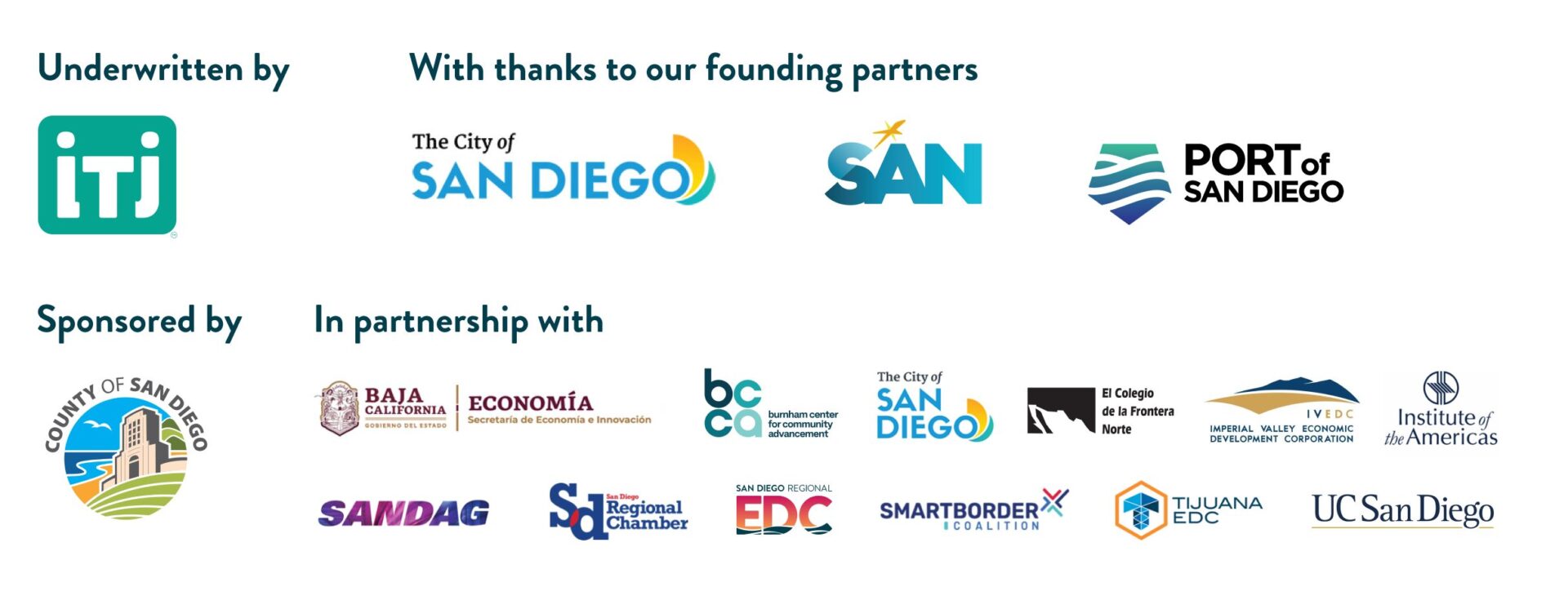WTCSD report quantifies binational trade impact, critical opportunities for continued growth
In November 2025, World Trade Center San Diego released “Binational Trade and Competitiveness: Harnessing Opportunity in the Cross-Border Economy,” which quantifies trade in the Cali Baja region (San Diego County, Imperial County, and Baja California), and analyzes the jobs, economic impact, and supply chains tied to the region’s cross-border economy.
In 2020, the U.S.-Mexico-Canada Agreement (USMCA) deepened nearly three decades of North American trade. Since then, Mexico has overtaken China as the U.S.’s top trading partner, with total goods trade reaching $840 billion and capital goods imports from Mexico up 43 percent. Cali Baja itself has since evolved into one of the world’s most dynamic cross-border supply chains, where more than $2.3 billion in goods cross the U.S.–Mexico border every day, fueling industries from aerospace and medical devices to electronics and clean energy.
Against a backdrop of trade volatility and a shifting policy landscape, Cali Baja’s binational integration and co-production capabilities offer a critical opportunity to localize supply chains, strengthen North American competitiveness, and drive sustained economic growth. Yet, this same volatility, growing geopolitical tensions, and rising costs threaten to fragment this interconnected ecosystem.
“San Diego and Baja California don’t just share a border—we share an innovation ecosystem. USMCA keeps that ecosystem strong by powering advanced industries and building the resilient supply chains that define North America’s future,” said Dr. Nikia Clarke, Executive Director at World Trade Center San Diego, the report’s author. “In a world of rising tariffs and fractured trade, this is our moment to double down on this regional strength—by modernizing border infrastructure, recertifying the USMCA, and prioritizing continued investment in the binational co-production model that is our key competitive advantage.”
KEY report FINDINGS
- USMCA growth reduces North American reliance on China, strengthening nearshoring opportunities. Trilateral trade has increased by 31 percent and Mexico has emerged as a dependable, highly technical manufacturing partner. Under the USMCA, capital goods imported from Mexico to the U.S., such as machinery and manufacturing equipment, surged 43 percent.
- Services is the fastest-growing sector in US-Mexico trade. The integrated binational partnership extends beyond goods: In 2024, U.S. services exports to Mexico reached $50.4 billion, with imports from Mexico at $45.1 billion—increases of 54 percent and 46 percent respectively under the USMCA.
- Binational trade fuels jobs and economic growth in San Diego and Imperial. Nearly 97 percent of San Diego and Imperial County’s $34.5 billion in goods exports go to Mexico, supporting roughly 95,000 jobs in critical industries like aerospace, medical device, and semiconductor.
- Baja California is diversifying and moving up the value chain. Beyond traditional maquiladoras and electronics, the region now exports higher-value goods across multiple industries—including medical device and transportation equipment—compared to 15 years ago, when electronics alone accounted for 70 percent of exports.
- Stability under the USMCA supports small businesses. For the 97 percent of U.S. exporters that are small businesses, a stable trade framework helps them navigate global economic uncertainty— which two-thirds identify as their top concern.
“As a global leader in aerospace, we know innovation is international. In San Diego, our access to highly skilled talent right across the border has been the difference between stagnation and growth,” said David Orth, Business Unit Director, GKN Aerospace. “Working together, our teams in Mexico and San Diego have been critical to our continued development and delivery of cutting-edge systems for commercial and defense aircraft all over the world.’’
The report was underwritten by ITJ, with sponsorship by the County of San Diego, and research support from 10 regional partners, including SANDAG, Tijuana EDC, UC San Diego, and more, and was unveiled at the 2025 Cali Baja Business Summit to an audience of 200+ binational business, academic, and civic leaders.
About World Trade Center San Diego
World Trade Center San Diego (WTCSD) operates as an affiliate of San Diego Regional Economic Development Corporation (EDC). WTCSD works to further San Diego’s global competitiveness by building an export pipeline, attracting and retaining foreign investment, and increasing San Diego’s global profile abroad. WTCSD.org
